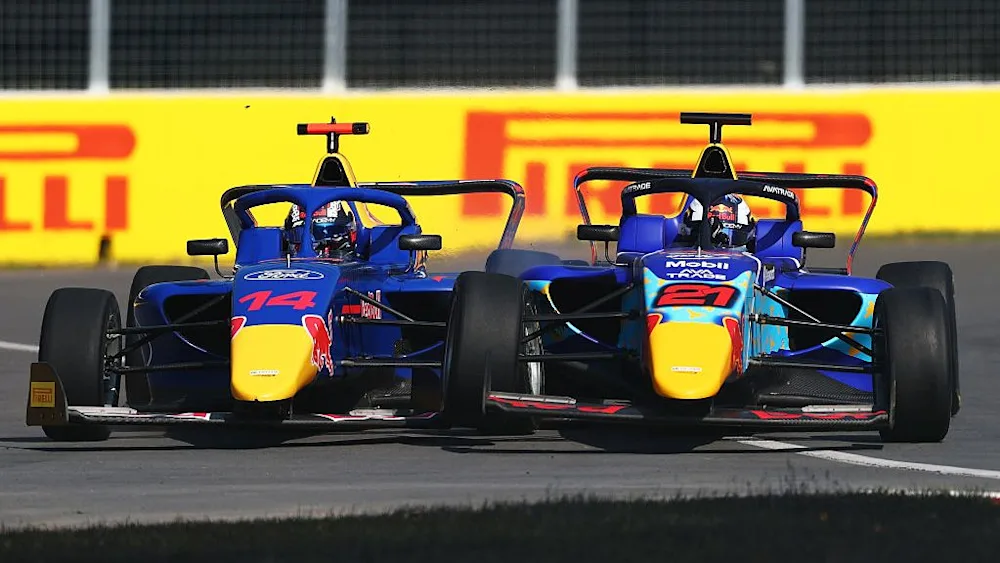Hollywood meets the grid: the impact of ‘F1: The Movie’
- Lily Howard
- Jun 23
- 4 min read
Written by Lily Howard, Edited by Marit Everett

When Formula One collides with the flash of Hollywood, sparks are bound to fly. F1: the Movie is set to release in June 2025, and is one of the most ambitious attempts yet to bring the thrill of motorsport to the big screen. Directed by Joseph Kosinski (known for works such as Top Gun: Maverick) and starring Brad Pitt and Damson Idris, the film isn’t just a cinematic spectacle, it’s a cultural moment for the motorsport series.
But beyond the red carpets and roaring engines lies a pressing question: What impact will this movie have on the world of F1?
F1: The Movie follows Sonny Hayes (played by Pitt), who is a retired driver that is returning to the grid to mentor rookie sensation Joshua Pearce (Idris). The two drive for a fictional 11th F1 team—APXGP. While the plot follows a reliable sports narrative, the execution of the film is what makes it groundbreaking.
Being shot during real-life race weekends during the 2023 and 2024 seasons, APXGP had a mock garage, pit crew, and custom-built car that shared the paddock with the actual F1 teams. This kind of behind-the-scenes access is unprecedented, as it offers a raw and authentic portrayal that sets it apart from any motorsport film released previously.
It’s no secret that Drive to Survive amplified F1’s popularity, particularly in the US, igniting a fresh fanbase. Like this, the film plans to build on that momentum, yet with a global cinematic reach. The star power that is brought by Pitt, partnered with Kosinski’s visual flair, creates the expectation that the film is to pull in a wider audience, particularly with hopes to engage casual viewers or those unfamiliar with the sport.
Several teams, alongside The FIA and Liberty Media, have actively supported this project, helping to construct a fully functioning car that adhered to the true FIA safety standards. Pitt and Idris even drove high-performance single-seaters modified for safety and filming, which is a bold move that shows how much trust the sport placed in the filmmakers.
For this, Kosinski revealed that he and his team purchased six real Formula 2 cars after Mercedes F1 team principal Toto Wolff came up with the idea of having the actors driving real racing cars to “capture the speed of this sport”.
From a marketing standpoint, this film represents a strategic pivot for the sport. With races now spread across Miami, Saudi Arabia and China, F1 is positioning itself as a global entertainment property, not just a European-rooted motorsport series. Furthermore, to the sport, it will increase the selling of F1 merchandise, increase ticket sales, and drive viewership, especially within audiences that may not be the primary target. For the sponsors and advertisers, this is the kind of exposure opportunity money isn’t able to buy.
Seven-time world champion, Sir Lewis Hamilton, is one of the producers, and has described it as “the most authentic racing film you’ll ever experience in cinema”. Furthermore, he added that “The whole filmmaking team put an incredible amount of effort to deliver a genuine Formula One racing experience unlike you’ve ever experienced before on screen”, as well as “audiences around the globe are going to feel like they’re on the track and in the driver’s seat”.
However, the cultural side-effects should also be considered. The narrative explores team dynamics, mentorship, ego, and resilience, further echoing the realness of F1 it is striving to represent. Additionally, questions may arise such as whether or not it will influence how fans view drivers.
As the lines between entertainment and sport continue to blur, F1’s stars may need to get used to being in front of the camera more than ever. This movie, mixed with the dramatisation of Drive to Survive may mean we are entering an era where the drivers are becoming both athletes and actors.
The film was screened to the current drivers during Monaco Grand Prix week, and as a whole they gave positive reviews. Charles Leclerc explained that “It was really cool. Obviously, we are looking at it as Formula One drivers, and we always try and see all the small details that are not exactly the way we live things. But it’s very Hollywood-like, and I think that’s really cool because it’s not just for F1 drivers in the end. It’s for a broader audience, and I thought it’s absolutely great for the sport to have a movie like that.”
F1: The Movie isn’t just another Hollywood blockbuster - it’s a bold bet on the future of motorsport storytelling. For F1, it’s a chance to break out of its traditional mold and connect with a new generation. For fans, it’s an opportunity to see their favourite sport in a new light.
To the world, Formula One will no longer be just a sport. What are your thoughts on the up-and-coming movie?
F1: The Movie is set to release at the end of June 2025.








